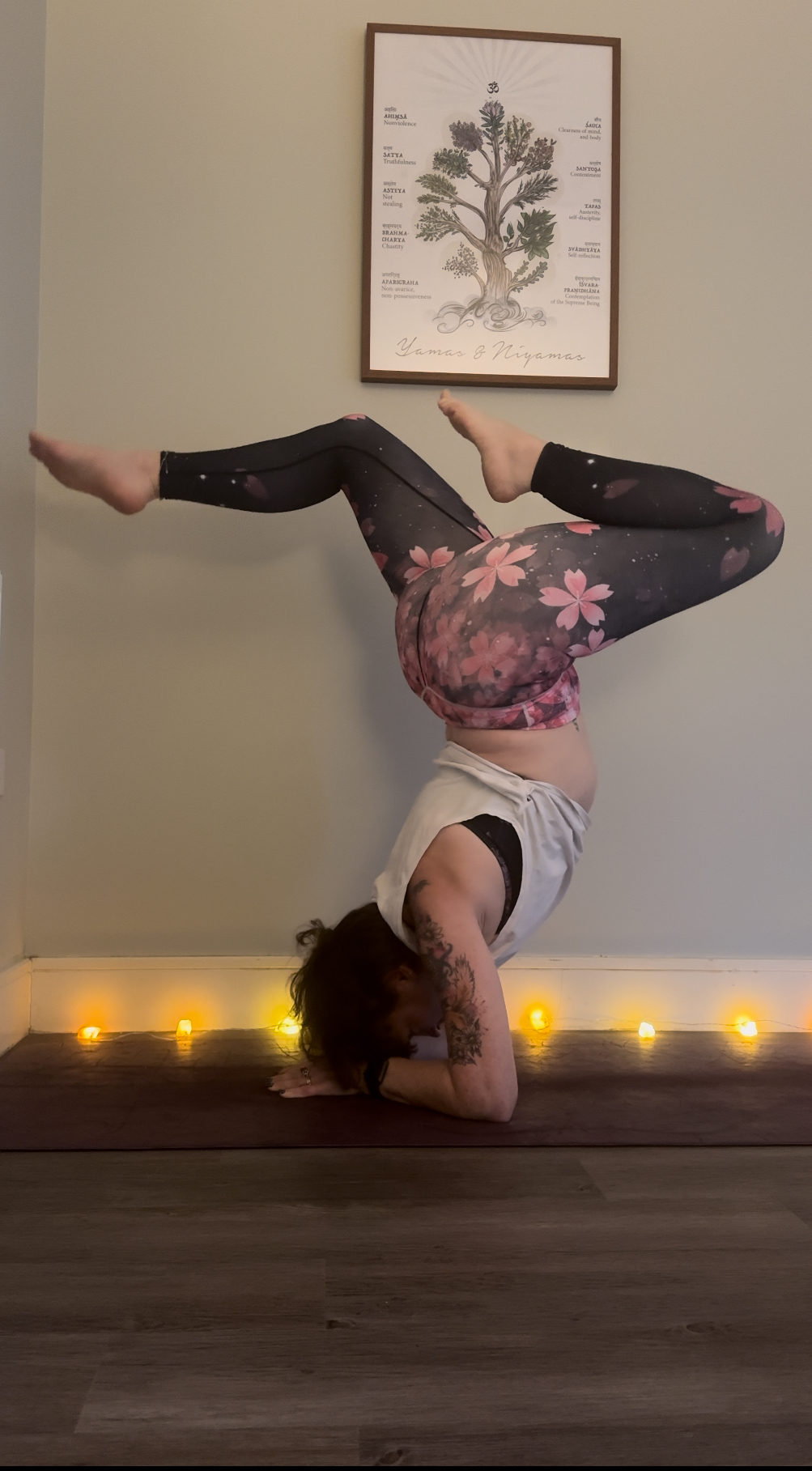Burnout- the hidden signs and how to address it.
- Sam Davis (founder of MYA)

- Mar 5
- 5 min read
Burnout has become a modern epidemic, creeping into our lives without us even realising it. It’s easy to assume burnout looks like complete exhaustion – someone on the verge of collapse, unable to function. But in reality, it often develops subtly, showing up in ways we might dismiss as just being “a bit tired,” “a bit fed up,” or “just stressed.”
For midlife women, burnout is particularly common, and it’s not just due to the well-documented challenges of perimenopause and ADHD. Women in their 40s and 50s are often carrying the weight of multiple responsibilities – careers, family life, caring for ageing parents, running a household, and managing their own shifting health. The mental load alone can be staggering. When we add fluctuating hormones, reduced stress resilience, and often years of masking ADHD symptoms, burnout becomes a very real risk.
I’ve struggled for the last six months trying to navigate grief, perimenopause, ADHD and a high pressure job. After a near total collapse I have taken back control and streamlined my life. I’m passionate about helping other people, particularly women, recognise and address their own burnout symptoms in a way that is realistic and doable.
My own experiences led me to explore the hidden signs of burnout, why midlife women are so susceptible, the cost of burnout to society, and most importantly, how we can recover and build resilience using simple but powerful tools like yoga, mindfulness, and self-care.
The Hidden Signs of Burnout
Burnout doesn’t always look obvious, and that’s part of the problem. We live in a culture that glorifies productivity, so we often ignore the warning signs until we hit breaking point. Some of the lesser-known signs of burnout include:
1. Emotional Detachment and Cynicism
You might find yourself feeling indifferent about things you once cared deeply about. Whether it’s work, friendships, or hobbies, nothing seems to spark much joy anymore. This can often be mistaken for low mood or even mild depression, but in the context of burnout, it’s more about emotional exhaustion.
2. Brain Fog and Poor Concentration
Struggling to focus? Forgetting simple things? Feeling like your brain just isn’t functioning properly? Burnout can affect cognitive function, making it harder to process information, make decisions, or stay on top of tasks. For women with ADHD, this can be particularly frustrating, as it exacerbates executive dysfunction.
3. Increased Irritability or Emotional Sensitivity
Little things that never used to bother you suddenly make you want to scream or cry. If you find yourself snapping at your loved ones, feeling disproportionately emotional over small issues, or withdrawing to avoid conflict, it could be a sign your nervous system is overloaded.
4. Physical Symptoms That Don’t Have a Clear Cause
Burnout isn’t just mental – it takes a toll on the body too. Unexplained headaches, digestive issues, muscle tension, chest tightness, or persistent colds can all be signs of chronic stress and exhaustion.
5. Sleep Disturbances
You’re exhausted but can’t sleep. Or you fall asleep easily but wake up feeling like you haven’t rested at all. Burnout disrupts the body’s ability to regulate stress hormones, which can wreak havoc on sleep cycles.
6. Loss of Motivation, Even for Things You Enjoy
Maybe you used to love reading, exercising, or seeing friends, but now you can’t muster the energy. The motivation to take care of yourself disappears, and everything starts to feel like a chore.
7. A Deep Sense of Overwhelm
Feeling like everything is “too much” – even the smallest tasks – is a key burnout indicator. When you’re burnt out, your brain struggles to prioritise, and even simple decisions feel exhausting.
Why Midlife Women Are Particularly Susceptible
Women in midlife are in the eye of the storm when it comes to burnout. A combination of biological, social, and psychological factors makes this phase of life uniquely challenging.
Hormonal Shifts and Stress Resilience
During perimenopause, levels of oestrogen, progesterone, and cortisol regulation shift dramatically. Oestrogen plays a role in stress resilience, so when it declines, our ability to cope with stress naturally decreases. This means that the same workload or responsibilities that felt manageable a few years ago can suddenly feel impossible.
The Mental Load
Women in midlife often juggle multiple roles – working full-time, managing a household, caring for children, supporting elderly parents, and keeping on top of social commitments. This invisible labour is exhausting and contributes to chronic stress.
Late ADHD Diagnoses and Burnout
Many women are only discovering they have ADHD in midlife – often after their children are diagnosed, or when perimenopause amplifies symptoms. Years of masking, perfectionism, and working twice as hard to keep up can take a significant toll, leading to exhaustion and burnout.
The Cost of Burnout – to Individuals, Employers, and the NHS
Burnout isn’t just a personal issue – it has a ripple effect across society.
• For individuals, burnout affects physical and mental health, leading to increased anxiety, depression, and chronic illnesses. It can take months or even years to recover fully if left unchecked.
• For employers, burnout contributes to absenteeism, presenteeism (where employees show up but aren’t productive), and high turnover rates. According to a 2023 Deloitte report, workplace burnout costs UK businesses an estimated £45 billion per year.
• For the NHS, burnout leads to increased GP visits, mental health support needs, and stress-related illnesses. Research suggests that stress-related conditions cost the NHS billions annually, placing an enormous strain on already stretched services.
Recognising and addressing burnout early isn’t just about personal wellbeing – it’s essential for the economy and public health too.
Recovering from Burnout – Three Non-Negotiables
Recovery from burnout isn’t about taking a weekend off – it requires a fundamental shift in how we care for ourselves. The good news? Small, consistent actions can have a profound impact. These three non-negotiables are a great place to start.
1. A Daily Walk Outside
Nature is one of the most powerful (and underutilised) tools for stress recovery. Walking outside, even for just 10-15 minutes, lowers cortisol levels, improves mood, and provides a much-needed break from screens and mental overload.
2. Mindful Movement (Yoga, Qigong, Strength Training, or Pilates)
Burnout leaves the nervous system dysregulated, stuck in a state of fight-or-flight or complete exhaustion. Movement – particularly yoga, Qigong, or mindful strength training – helps reset the nervous system, reduce stress hormones, and bring the body back into balance.
• Yoga: Helps regulate the nervous system, improves flexibility, and promotes deep relaxation.
• Qigong: A gentle, energy-balancing practice perfect for calming a frazzled nervous system.
• Strength training: Builds resilience and releases feel-good endorphins.
• Pilates: Supports core strength, posture, and gentle movement to relieve tension.
3. Gratitude Practice
Burnout narrows our focus to stress and overwhelm. A simple daily gratitude practice rewires the brain to notice the good, reducing stress and boosting emotional resilience.
• Write down three things you’re grateful for each day.
• If writing feels like too much, just think about them before bed.
• The key is consistency – even small efforts make a difference.
These three habits won’t cure you, but they will create a change in your consciousness which will allow you the breathing room to see what needs to change. Our brains are capable of amazing things, and gratitude, fresh air and movement are the foundations for a neural shift that can be life changing.
Burnout is not a sign of weakness – it’s a signal that something needs to change. Midlife women are particularly at risk, but by recognising the signs early and prioritising self-care, we can recover and build resilience.
The key is consistency. Small, daily habits – a walk outside, mindful movement, and gratitude – create a foundation for long-term wellbeing.
If you’re feeling burnt out, start small. Just five minutes of movement, one moment of gratitude, and a short walk can begin the process of recovery. Your wellbeing is worth it.


Comments